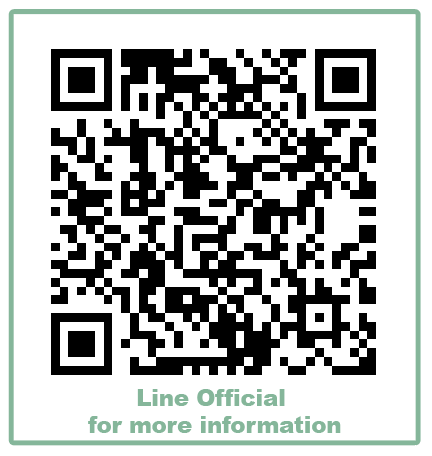Inclusive Education Management from New Zealand to Application in Thailand
DOI:
https://doi.org/10.14456/jescu.2025.10Keywords:
developing students, student with special needs, inclusive education, special educational needs in New ZealandAbstract
The development of students with special needs in New Zealand is an inclusive education system that is led by the state based on the belief that all learners have potential, are valuable to the well-being of their families and communities, and that each learner is valued as an individual. Lessons from New Zealand can be applied to Thailand include organizing the curriculum that integrates knowledge of early childhood education and special education, providing early invention services quickly, organizing specific programs for children with special needs, and supporting teachers to be able to take care for children with special needs in the classrooms. Also, teaching media and technology are used as tools to promote and support effective teaching and learning, including assessment of diverse learners and emphasis on assessment to support learning. This leads to the organization of meaningful teaching and learning that truly responds to the needs of learners.
References
ภาษาไทย
กิ่งกาญจน์ บูรณสินวัฒนกุล. (2562). การพัฒนาสื่อการเรียนรู้บอร์ดเกมการศึกษาเพื่อส่งเสริมความสามารถการเรียนรู้ภายในรายวิชาพัฒนาการเรียนภาษาไทยและความสุขในการเรียนรู้สำหรับนิสิตระดับปริญญาตรี. คณะมนุษยศาสตร์ มหาวิทยาลัยศรีนครินทรวิโรฒ. http://thesis.swu.ac.th/swufac/Hum/Kingkarn_B_R440865.pdf
ณรงค์ อัมพรภาค. (2550). การศึกษาคุณภาพการดำเนินงานจัดการเรียนร่วมของโรงเรียนแกนนำจัดการเรียนร่วม สังกัดสำนักงานเขตพื้นที่การศึกษาสุโขทัย เขต 1 และ 2. [วิทยานิพนธ์ปริญญามหาบัณฑิต ไม่ได้ตีพิมพ์]. มหาวิทยาลัยศรีนครินทรวิโรฒ.
วรพล ธุลีจันทร์, สุภัทรา เอื้อวงศ์, และ ชนิศา ตันติเฉลิม. (2566). รูปแบบการจัดการศึกษาเพื่อพัฒนาคุณภาพชีวิตเด็กที่มีความต้องการจำเป็นพิเศษ ระดับปฐมวัย. วารสารมนุษยศาสตร์และสังคมศาสตร์ มหาวิทยาลัยนครพนม, 13(2), 163-176. https://so03.tci-thaijo.org/index.php/npuj/article/view/264944/179701
สำนักงานเลขาธิการสภาการศึกษา. (2562). การติดตามและประเมินผลการจัดการศึกษาเรียนรวมสำหรับเด็กพิการ และเด็กที่มีความต้องการจำเป็นพิเศษ. 21 เซ็นจูรี่ 84.
สุพจน์ ศรีนุตพงษ์ และ พลสัณห์ โพธิ์ศรีทอง. (2556). รูปแบบการพัฒนาภาวะผู้นำทางวิชาการของครูที่ส่งเสริมการจัดการเรียนรู้ด้วยการใช้เทคโนโลยีสารสนเทศในสถานศึกษาขั้นพื้นฐาน. วารสารวิชาการมหาวิทยาลัยอีสเทิร์นเอเชีย, 3(2), 105-113. https://so01.tci- thaijo.org/index.php/ EAUHJSocSci/article/view/26884
ภาษาอังกฤษ
Jarvis, P. (2009). The routledge international handbook of lifelong learning. Routledge. https://api.pageplace.de/preview/DT0400.9781135202538_A24313221/preview-9781135202538_A24313221.pdf
Kemp, J. E. and Smellie, D. C. (1993). Planning, producing, and using instructional technologies. Harper Collins.
Ministry of Education. (2007). The New Zealand curriculum. Learning Media.
Ministry of Education. (2009). Narrative assessment: A guide for teachers. Learning Media.
Ministry of Education. (2011). Collaboration for success: Inclusive education plans. Learning Media.
Ministry of Education. (2016, October 13). The New Zealand education system. https://www.education.govt.nz/our-work/about-us/education-new-zealand/our-education-system
Ministry of Education. (2018, October 10). Technology tools for learning inclusive education. https://inclusive.tki.org.nz/guides/technology-tools-for-learning/#key-resources
Nieto, S. (2014). Diversity education: Lessons for a just world. In M. Nkomo & S. Vandeyar (Ed.), Thinking diversity, building cohesion – a transnational dialogue on education (pp. 17-39). Rozenberg Quarterly.
Downloads
Published
How to Cite
Issue
Section
License

This work is licensed under a Creative Commons Attribution-NonCommercial-NoDerivatives 4.0 International License.




